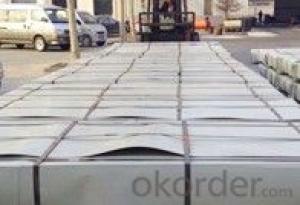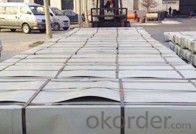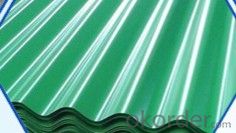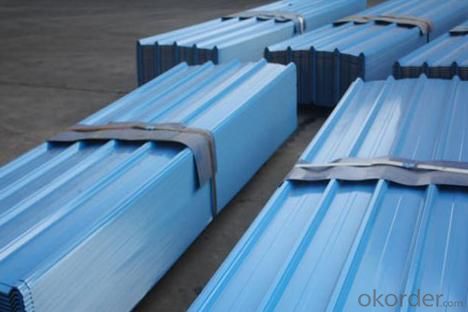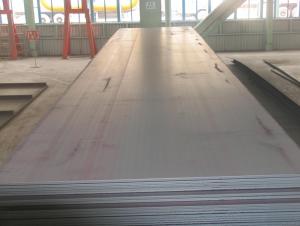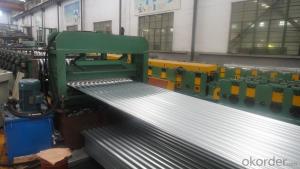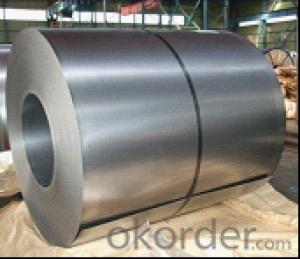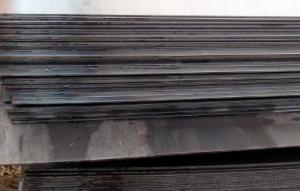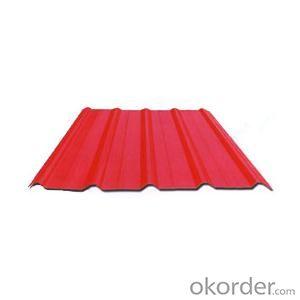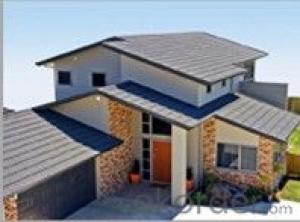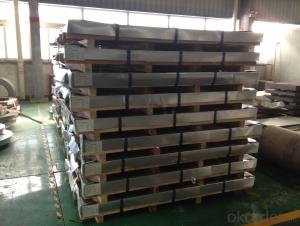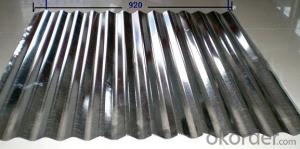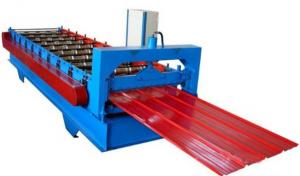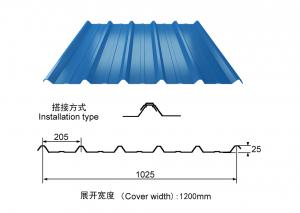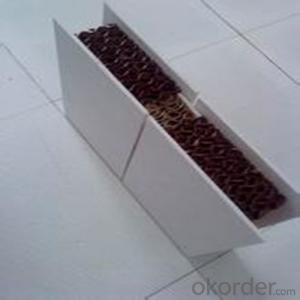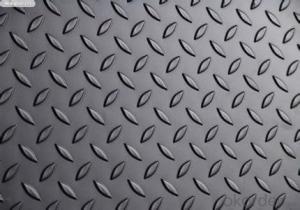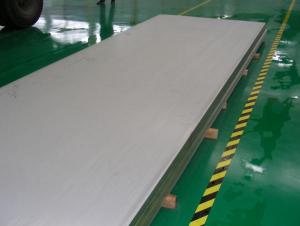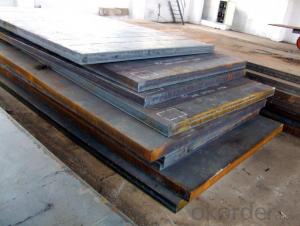PREPAINTED CORRUGATED STEEL SHEET WITH BRIGHT
- Loading Port:
- Tianjin
- Payment Terms:
- TT OR LC
- Min Order Qty:
- 25 m.t.
- Supply Capability:
- 20000 m.t./month
OKorder Service Pledge
OKorder Financial Service
You Might Also Like
PPGI/GI Corrugated Steel Sheet/Metal Roofing
specifications
thickness:0.15-0.6mm
width:600-1250mm
zinc coating:60-180g/m^2
certificates:
ISO 9001:2008 QS-9000
Entity factory
2. Galvanization or hot dip
3. (0.12-1.5)*1250mm or under
4.SGCC/JIS/G3302/DX51D
5.A competitive pricePPGI /COLOR STEEL/ CGCC
PPGI /CCLI /CGLCC /PREPAINTED STEEL COIL/SHEET
COLOR: RAL STANDARD
CGCC DX51D DX52D Q235/Q195L
application:
commercial use, structural use, household appliance, light industry, constructure
wear resistant steel, high-strength steel plate
| product | corrugated metal roofing sheets |
| Brand | CNBM |
| supply ability | 250,000 tons per year |
| base material | galvanized steel sheet |
| thickness | 0.15-0.6mm |
| width | 600-1250mm |
| quality | spcc,dx51d,sgcc,sgch |
| zinc-coating | 60-180g/m2 |
| technique | cold rolled-hot dipped galvanizing- corrugated |
| Payment Terms | T/T L/C D/A D/P |
| tolerance | thickness: +/- 0.02mm |
| width: +/-2mm | |
| feature | lowes sheet metal roofing have excellent performance of decoration, corrosion resisitance etc. |
| package | 1. PVC film 2. Anti-water paper. 3. Metal |
- Q: What is the minimum thickness of a steel sheet?
- The minimum thickness of a steel sheet can vary depending on the specific grade and type of steel being used, but it typically ranges from around 0.5 millimeters to 2 millimeters.
- Q: What are the common applications of galvannealed steel sheets?
- Galvannealed steel sheets are commonly used in a variety of applications, including automotive manufacturing, construction, appliances, and HVAC systems. The corrosion-resistant properties of galvannealed steel make it ideal for outdoor structures and components exposed to harsh environments. Additionally, its excellent paint adhesion and formability make it a preferred choice in the production of automotive parts and household appliances.
- Q: What is the typical composition of stainless steel sheets?
- The primary constituents of stainless steel sheets are iron, chromium, and nickel, which are responsible for its distinct properties. The proportions of these three elements can vary depending on the specific grade of stainless steel being utilized. On average, stainless steel sheets typically contain approximately 10-30% chromium and 8-20% nickel. Moreover, small quantities of other elements like carbon, manganese, and molybdenum may be present to further augment the strength, corrosion resistance, and other desired characteristics of the stainless steel. The composition of stainless steel sheets is meticulously balanced to attain the desired amalgamation of durability, strength, and resistance to corrosion, which makes it a highly favored choice across industries such as construction, automotive, and manufacturing.
- Q: How do steel sheets perform in terms of vibration damping?
- Steel sheets have good vibration damping properties due to their high density and stiffness. They are effective in reducing vibrations and minimizing noise transmission, making them suitable for various applications requiring vibration control and noise reduction.
- Q: How do steel sheets perform in terms of scratch resistance?
- Renowned for their exceptional ability to resist scratches, steel sheets are widely recognized for their strong and durable nature. This quality makes them highly suitable for a multitude of applications where they may come into contact with objects or surfaces that could potentially cause damage. Moreover, steel sheets possess the capacity to endure regular wear and tear, rendering them particularly suitable for demanding environments with heavy usage. Furthermore, the scratch resistance of steel sheets can be further enhanced by applying coatings or finishes, thereby achieving an even higher level of protection. In summary, the outstanding scratch resistance of steel sheets has earned them a well-deserved reputation as a reliable choice for a diverse range of industrial and commercial purposes.
- Q: Can steel sheets be used for automotive applications?
- Yes, steel sheets are commonly used for automotive applications due to their strength, durability, and cost-effectiveness. They are used in various parts of vehicles such as body panels, structural components, chassis, and engine components. Steel sheets offer excellent crash resistance, corrosion resistance, and can be easily formed and fabricated into complex shapes, making them a suitable choice for automotive manufacturing.
- Q: Can steel sheets be used for automotive wheels?
- No, steel sheets are not typically used for automotive wheels. Wheels are usually made from aluminum alloy or magnesium alloy, as these materials provide better strength-to-weight ratio and improve the overall performance and fuel efficiency of the vehicle.
- Q: Can steel sheets be perforated or embossed?
- Yes, steel sheets can be perforated or embossed. Perforation involves creating holes or a pattern of holes in the steel sheet, while embossing involves creating raised or sunken designs on the surface of the steel sheet. Both techniques are commonly used in various industries for functional or decorative purposes.
- Q: What are the different strength properties of steel sheets?
- The different strength properties of steel sheets include tensile strength, yield strength, and elongation. Tensile strength refers to the maximum amount of stress a steel sheet can withstand before breaking, while yield strength is the maximum stress that can be applied without causing permanent deformation. Elongation measures the ability of a steel sheet to stretch or elongate before it fractures. These properties are important factors to consider when determining the suitability of steel sheets for various applications.
- Q: Can steel sheets be used for containers or storage units?
- Yes, steel sheets can be used for containers or storage units. Steel is a durable and strong material that provides excellent protection for storing goods or as containers for transportation. Additionally, steel is resistant to corrosion, making it suitable for long-term storage in various environments.
Send your message to us
PREPAINTED CORRUGATED STEEL SHEET WITH BRIGHT
- Loading Port:
- Tianjin
- Payment Terms:
- TT OR LC
- Min Order Qty:
- 25 m.t.
- Supply Capability:
- 20000 m.t./month
OKorder Service Pledge
OKorder Financial Service
Similar products
Hot products
Hot Searches
Related keywords
